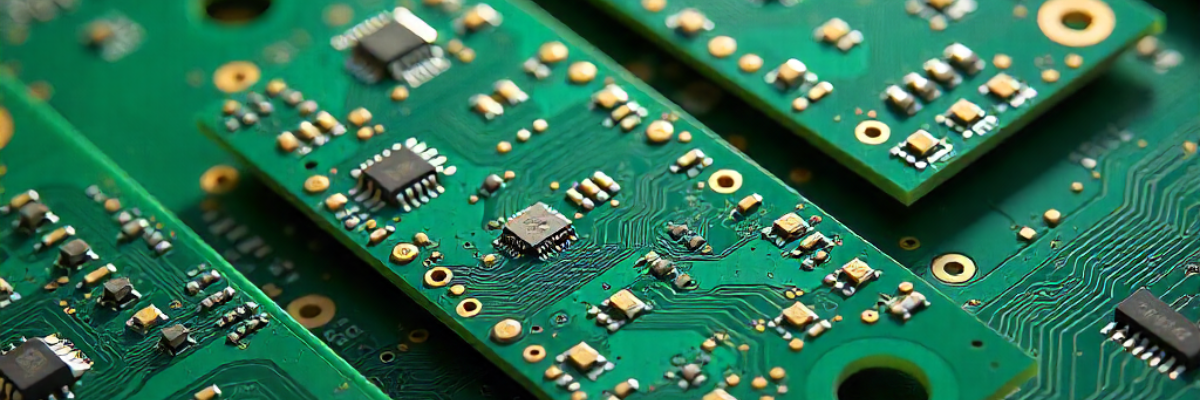In the demanding world of mission-critical military and aerospace applications, the performance and reliability of electronic systems are paramount. Components need to withstand extreme conditions, from severe temperature variations to high-pressure environments and radiation exposure. When it comes to ensuring the longevity and functionality of electronics in these sectors, flex and rigid-flex PCBs are often the unsung heroes.
These printed circuit boards are designed specifically to handle the toughest conditions, offering flexibility, compactness, and resilience in environments where traditional PCBs might fail. In this post, we explore how these advanced PCBs are engineered to meet the unique challenges of military and aerospace environments, and why they are becoming increasingly crucial in the development of next-generation technologies.
- Extreme temperatures: From the freezing cold of high altitudes to the sweltering heat of deserts, and temperature extremes in outer space environments.
- Pressure changes: Aerospace systems face changes in pressure due to altitude shifts, while military systems may experience intense pressure changes in underwater or high-pressure environments.
- Radiation exposure: Space applications that deal with high levels of radiation, can degrade electronic components over time.
Today, flex and rigid-flex PCBs are engineered specifically to handle these harsh conditions and are critical in applications such as navigation systems, communication devices, radar systems, and sensor technologies.
Design Challenges for Flex and Rigid-Flex PCBs
When designing flexible PCBs for military and aerospace applications, several technical considerations must be addressed to ensure the board functions optimally under extreme conditions. Here are the major design challenges.
- Temperature Extremes: One of the most significant challenges in designing flex and rigid-flex PCBs for military and aerospace applications is ensuring the board can handle a wide range of temperature fluctuations. Extreme temperatures can cause components to expand and contract, potentially leading to cracks, shorts, or failures.
Solution: The use of high-temperature-resistant materials such as polyimide and Kapton can help ensure that flexible PCBs maintain their integrity even in environments where the temperature reaches as low as -50°C or as high as 150°C. Rigid-flex designs can combine flexible materials with rigid substrates to provide structural strength and stability.
- Size and Weight Constraints: Space and military systems often require lightweight and compact designs to minimize the overall system weight and size. This is where flexible PCBs really shine.
Solution: Flex and rigid-flex PCBs allow for conformable designs that can fit into unconventional shapes and small enclosures, providing more flexibility for engineers to reduce space without sacrificing performance. The thin profile and lightweight nature of flexible boards make them ideal for miniaturized aerospace and military systems.
- Durability and Flexibility: Both flexible and rigid-flex PCBs need to maintain mechanical durability while remaining flexible enough to endure physical stresses such as vibration, shock, and movement. Military and aerospace environments often require devices that must withstand significant mechanical strain during operation.
Solution: Flexible PCBs are designed to endure bending and flexing without losing functionality, and rigid-flex designs combine both flexible and rigid materials to provide the ideal balance of strength and flexibility. We can apply shock-resistant coatings or encapsulation to PCBs to enhance their durability.
- Pressure Resistance: Aerospace applications, such as satellites or unmanned aircraft, must endure pressure changes as they ascend or descend through different layers of the atmosphere. Likewise, military equipment might face high-pressure environments in underwater systems or deep space.
Solution: Flex and rigid-flex PCBs can be designed with hermetically sealed enclosures to protect against the ingress of moisture and contaminants, which are critical when exposed to high-pressure situations. Flexible PCB substrates such as Polytetrafluoroethylene (PTFE) can also be chosen for their resilience in varying pressure conditions.
How Flex and Rigid-Flex PCBs Are Revolutionizing Military and Aerospace Systems
The unique capabilities of flex and rigid-flex PCBs are not just about survival in extreme conditions—they’re about enabling cutting-edge innovation in aerospace and military systems. Some of the critical areas where these PCBs are making a significant impact include:
- Avionics and Flight Systems
- Radar and Communication
- Navigation Systems
- Space Exploration
Trust Rigiflex for Your Flex and Rigid-Flex PCB Needs
The design and production of flex and rigid-flex PCBs for military and aerospace environments is a delicate balancing act that requires high-performance materials, precision engineering, and careful consideration of extreme environmental factors. These innovative PCB solutions are the backbone of modern aerospace and military systems, enabling higher efficiency, durability, and compact designs.
Being one of the leading providers of PCB manufacturing and assembly services, Rigiflex specializes in designing and manufacturing flex and rigid-flex PCBs that meet the most demanding requirements of the aerospace and military industries. Their experienced team ensures that each board is engineered to withstand even the harshest conditions, delivering long-lasting performance in critical applications.

